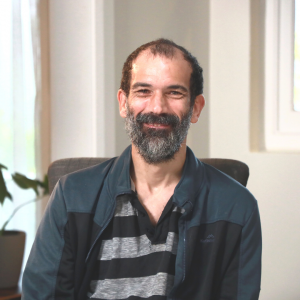
Jason Forbes
Disability Advocate

Who are you? What makes you who you are? What are you known for? How do you experience peace in your life?
Colossians 2:8–15
These are all questions that revolve around the idea of completeness or having a fulfilling life. We often attempt to answer these questions by what we have done, or what we are doing, or what we hope to do. This is often reflected in the questions we ask someone when we meet them for the first time, “What do you do?”. If we learn they’re retired we may ask, “What did you do?”. If they’re a student studying at university, we may ask “What do you hope to do?”. The idea that our occupation completes or fulfils us is embedded into our cultural conscious, and so we are quick to rate one another’s completeness according to our occupation.
For people with disabilities, this is problematic, because they often don’t have occupations that don’t rate highly on our scale of completeness. So, people with disabilities can be seen as those who are incomplete. That somehow, disability needs to be overcome or removed so that they can become complete. Or, that people with disabilities continue to exist in an incomplete state until heaven when, then, they will experience completeness.
Against this, the Bible says something shocking. The Bible claims that those in Christ, that is those who believe in Christ, have been made complete, or fulfilled now.
In a letter written to believers in Colossae, Christ is presented as all supreme. That everything that is to be known about God, and all his authority has been embodied in the person of Christ. Because of whom Christ is, we find our completeness in him.
Because of whom Christ is, we find our completeness in him.
Two images of circumcision and baptism are used to convey this completion (Col 2:8–12). Circumcision was an Old Testament practice that signalled the covenant between God and his people. Yet, it’s meaning extended to a spiritual sense (Deut 10:16; 30:6; Jer 4:4).
In Colossians, it is the spiritual sense that is being emphasised with reference to “circumcision made without hands” (Col 2:11). This spiritual circumcision is a stripping of the body of flesh – referring to the sinful nature. This is something made possible by the circumcision of Christ. The circumcision of Christ is not a rite that the believer is required to observe. Nor does the circumcision of Christ refer to Christ’s own circumcision, inasmuch as Christ was circumcised (Matt 2:21). Rather, the circumcision of Christ refers to the sanctifying work that he accomplished in his death and resurrection to strip away our sin (Col 2:13–15).
Baptism is the second image used to convey this completion. Baptism is the means of this spiritual circumcision (v.12). This has taken place in Christ’s death and resurrection. In this sense, baptism symbolises our death to our old life and resurrection to new life. The completion of the believer is intrinsically linked to Christ. The believer contributes nothing to their completion. The believer’s completion is received by faith, trusting that they have been completed through the “powerful working of God”.
This completion in Christ radically alters how we view ourselves and others. Believers, no matter how able or disabled have been forgiven, reconciled, set apart for God’s eternal purposes, and therefore have been made complete. They have been given every blessing to participate in a covenant relationship with God and his people. That is much to give thanks for.

